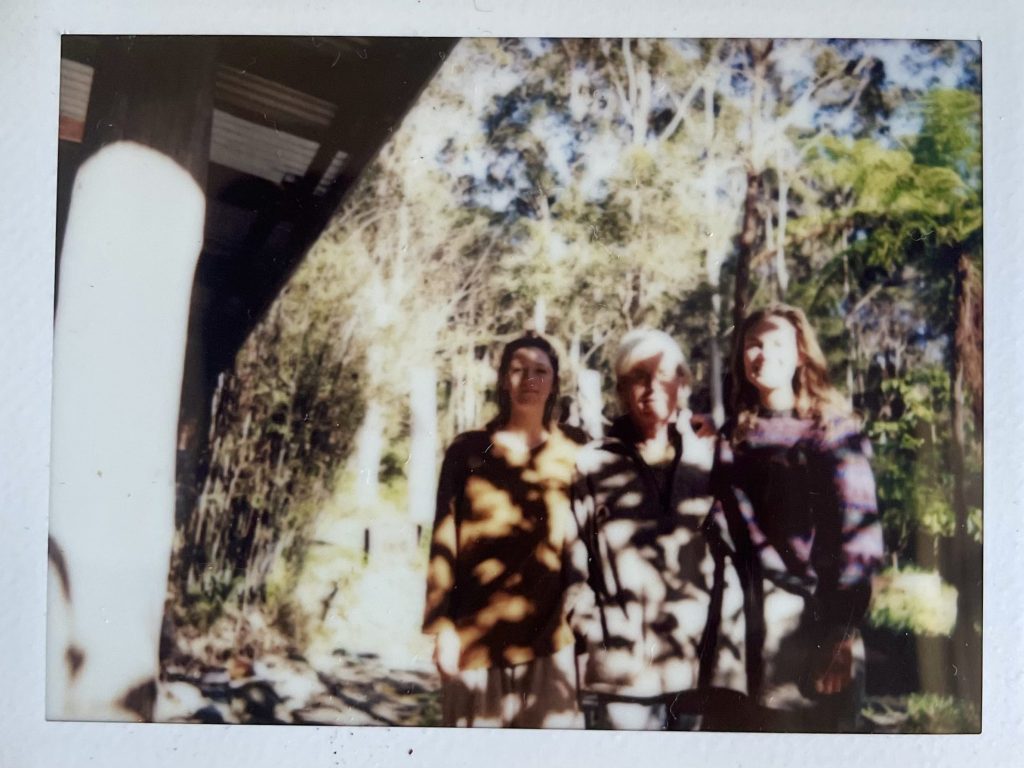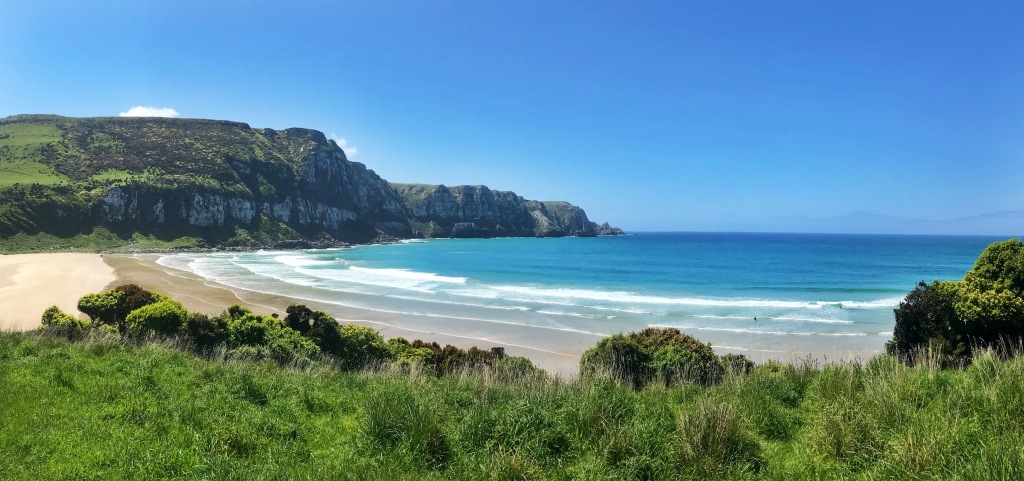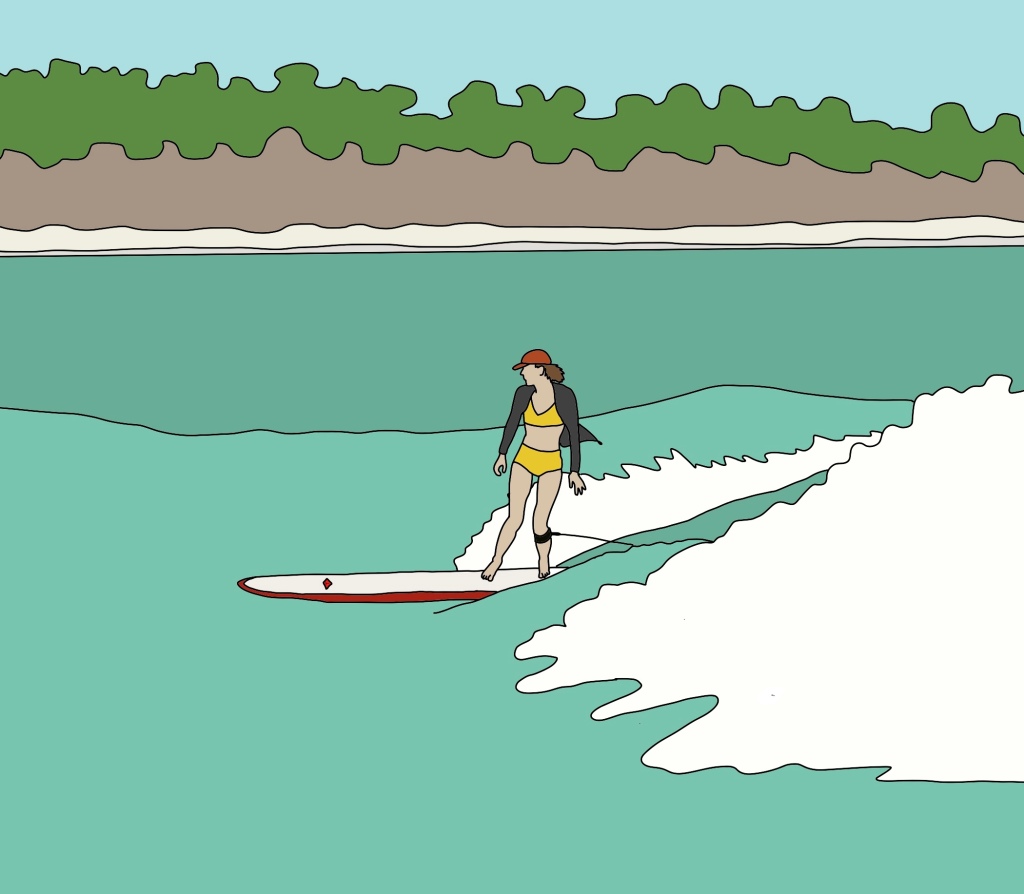This year the Western Australian surfing community lost a real legend. I got to know Warren while growing up in Perth’s coastal suburbs. My sisters and I were friends with his daughters, and I have fond memories of going to their house, sitting under the shade of the big eucalypt in their backyard. He shaped my 16th birthday present, a 6ft 2 thruster which I surfed until I moved to New Zealand 5 years ago, and still sits in my parents garage, a reminder of my small connection to the legend.

My sister was lucky enough to cultivate a friendship with Warren as an adult. After living in Bendigo for university, she moved to Torquay, finding herself swapping the shortboard she had grown up with for a 9ft mal, shaped for her 21st birthday by Warren. Her surfing progressed, the dawn patrols and salty weekends moulding the excitable shortboarder into a graceful longboarder. Deep considered paddle strokes replaced frantic splashing and kicking. The tucked stance became tall, cross-stepping instead of smashing top turns.

A fellow surf-obsessed mate in tow, she spent weekends at Warren’s property in Denmark, soaking up every scrap of ocean wisdom. They would trade labour for stories, helping Warren maintain the property and cooking him dinner, in exchange for peppering him with questions about his adventurous life, squeezing incredible tales from the ever humble man.

Surfing is commonly grouped with skateboarding, skiing, snowboarding, mountain biking. But surfing is not like them. You can ride a skateboard any time you like, in almost any location. Mountain biking is similar – if the trails are there you can pretty much always ride them. Provided it is winter and in an area that snows, you can go skiing. Conditions might not be all time, but you can still get out there and do it.
Surfing is different. You can be so desperate to get a wave, but if the wind isn’t right or there’s no swell, it’s not happening. You can’t schedule ‘Surf, 90 minutes’ into your workout plan for the week. You can rock up to the beach on the way to the airport, your last opportunity to surf before leaving the coast for good, but Mother Nature is indifferent to your desperation.
As a younger surfer, this used to frustrate me immensely. I had this deep need to catch a wave, to fly across the face, driven along by the ocean’s energy. I once surfed in the pre-dawn darkness, using the sound of the breaking waves to navigate the break. I was leaving early for year 10 camp and conditions that day were perfect.
Other times, I would show up with that same desperate need, just to have my hopes dashed as the crumbly onshore mush lapped at the sand. The ocean doesn’t care what you want, what you think you need. At first you get upset, frustrated and angry. But over time, you learn to roll with it. You show up to the beach every morning, on the dawn patrol. If conditions are good, out you go. If conditions are bad, you can sit in you car, drink your coffee and enjoy the morning. You can’t change the wind or the swell, so there is no sense in being upset by it. You learn to wait until the conditions change, which they will eventually. Sometimes they are perfect. Then you really appreciate that surf.
This lesson in taking things as they come is responsible for the ‘laid-back’ stereotype of the surfer. Although some surfers may be relaxed souls to begin with, those that have been doing it for some time develop an otherworldly patience. A sense of being part of everything around you, flowing along with the tides of life rather than swimming against them. They are happy, because they have learnt to live with things they can’t change.

Surfing also teaches an intense focus on nature. Sitting on your board, a light offshore gently playing across your face, you stare at the horizon. You interrogate each swell line headed towards you. Will this close out? Is it big enough? Where do I need to be to catch it?
When you are first learning, you notice the good surfers are in the right place to catch the wave every time. Even at a beach break, where that spot is changing constantly. You wonder to yourself, how are they so lucky?
They aren’t, they can just read the waves better than you can. They are constantly paddling, ensuring they are always in the right spot, despite being dragged around by winds and currents. You learn to counteract the natural forces pulling you out of position. You learn how to read the waves, the signs on their faces that predict how they will break.
As a longboarder, this is even more crucial, as you want to get onto the wave as early as possible. I am still reading waves like a shortboarder, getting into the pocket then scrambling desperately to my feet to avoid a nosedive. My sister can see into the future of the wave, many years of scrutinising their faces giving her a second sight. A few decisive, well placed strokes, a pause, then a graceful leap to her feet. She’s onto the unformed wave before it even begins to break, cruising along the smooth face as the whitewash eventually tumbles behind her.
There is something in that intense focus which is internally calming. You have no phone, no email, no headphones, no distractions. It’s just you and the ocean, all your attention focused on one task. This is a rarity now, the modern world splitting our focus between a myriad of attention-seeking gadgets. Surfing is a form of mindfulness, of meditation.

Surfing breeds a sense of community. When you paddle out to a spot, or are suiting up in the carpark, you are generally greeted with a smile, a hello and a chat about the conditions. Old boys at longboard clubs love teaching the next generation how to do repairs, to reglass tired old mals to give them a new life. Warren’s memorial at Ocean Beach was a beautiful example. As the time for the paddle-out approached, the carpark began to fill. Board after board was unloaded from roof racks, the back of station wagons, off bikes. Bare feet and sun bleached hair at every turn. Smiles, tears on weathered faces, hugs from wiry brown arms. We lined up on the beach, a guard of honour from boards crafted by Warren’s hand, leading his family down to the water to say goodbye. A diverse range of people, all united by surfing and a respect for one of its most dedicated disciples. We paddled out together, arranging ourselves in a large circle beyond the breaking waves. A minute of reverent silence before whooping and splashing, tossing flowers into the centre. Salty tears washed away by seawater. The traditional surfers farewell.

Warren embodied many of the lessons surfing teaches us. As he aged, his shoulders succumbed to the many years of paddling and shaping. He was unable to surf. Another person, deprived of the activity they had dedicated their life to, might have completely fallen apart, and I am sure that Warren mourned this loss deeply. However, instead of wallowing in self pity, he found new ways to enjoy surfing. Several people at his memorial spoke of how he would often pop up in the line up, swimming or body surfing. He got into surf photography, capturing many shots still cherished by the riders. Surfing teaches us that sometimes we can’t have what we want most, and we must find ways to deal with that to remain happy.
Warren was also a great champion of community. He mentored many young people, including a Denmark teenager who hung around the shaping bay until Warren agreed to take him on as an apprentice. The result was Pmac Shapes, a successful custom board business and the source of Pat McCarthy’s livelihood. Warren was a great supporter of women in surfing. Growing up surfing with his sisters in New Zealand, he noticed in the 70s women weren’t paddling out anymore. He made it his mission to encourage women surfers, and there are many, my sister among them, he supported over the years. Lucy Small, accidental sports equality activist and pro surfer was another of Warren’s mentees.

Surfing is great exercise and one of the most fun things on this earth. But it is so much more than that. Surfing teaches us how to immerse ourselves in nature, it connects us with a community of like minded souls. It teaches us we can’t always have what we want and instills a unique sense of gratitude when we do get it. It gives us the ability to adapt to adversity, to float with the tide instead of swimming against it. Surfing is a way of life, and Warren Thompson embodied this more than anyone else I have ever met. Rest easy Waz, I’m sure you’re noseriding the perfect point break somewhere.
If you would like to read more about Warren, check out Lucy Small’s great article on how his adventurous life drove his creative process. If this has inspired you to purchase a handcrafted, one of a kind surfboard, such as the many beautiful boards Warren used to make, contact Pat McCarthy at Pmac Shapes.

2 responses to “How Warren Thompson Taught Me Surfing’s Life Lessons”
What a lovely article. Thank you💙
LikeLike
The story telling and the honour shown to one surfer/mentor capturing the tribal essence of what we do with our adopted DNA our watershed moments
The young writer writes above her weight bringing to life the surfers experience (similar to Tim Wintons Breath)
I had just 3 hours with Warren a few days before he passed away 50 years after I had seen him last
We talked about his time in WA and I believe he shaped boards for Chris Shanahan whose dad and mum were my best friends in Capel WA from 1972 to 1976 Chris and Sarah were babies “Mr C” as he was called
I will add to this later as Snapper Rocks is calling me for a wave
Thinking of you out there Warren
LikeLike